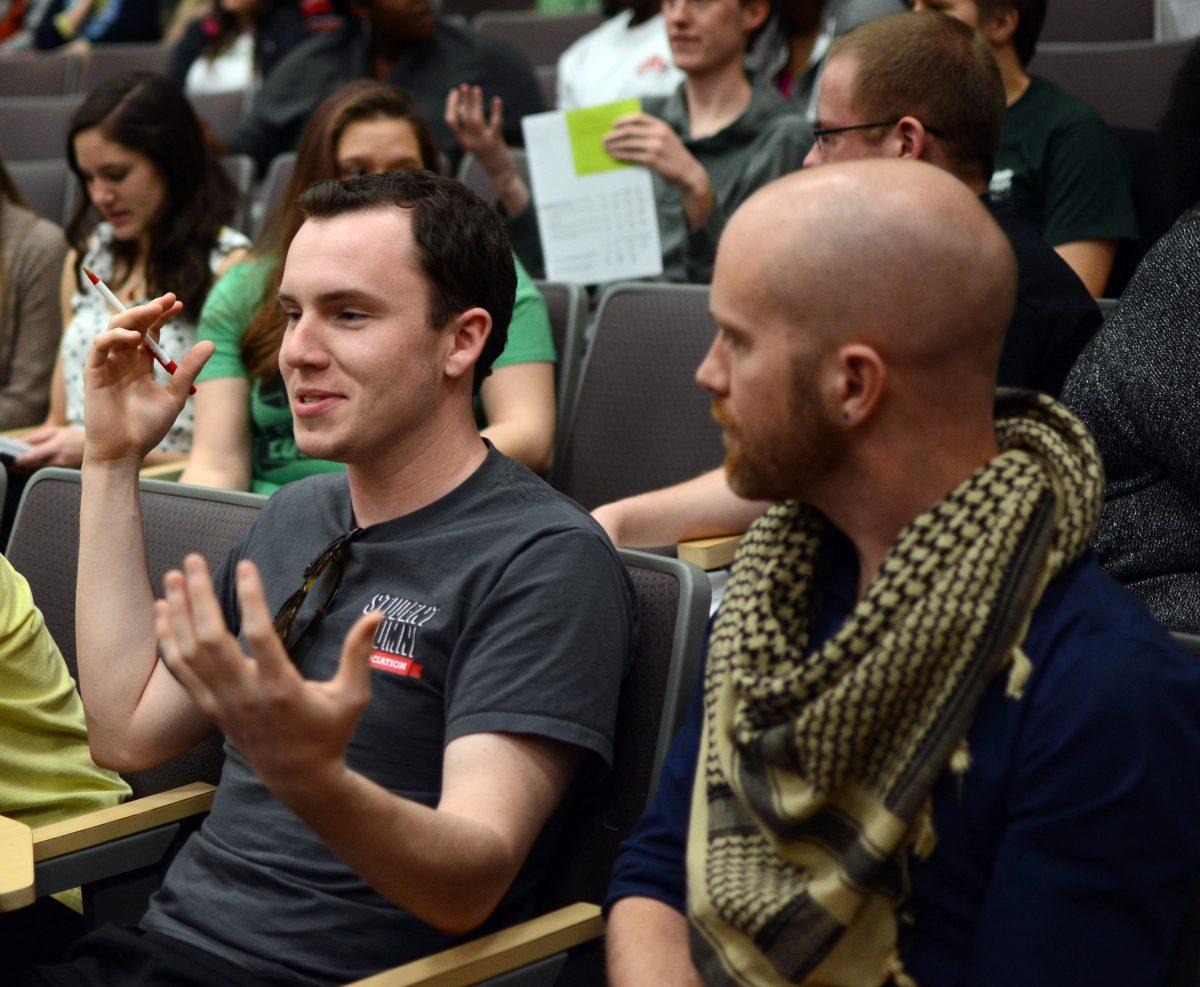 " />
" />
Lauren Hight
Assistant Director of University Scholars Program Chester Brewer, and freshman studying political science major Adam Skrzecz engage in discussions about race after viewing the MTV documentary "White People". The documentary about race among today's generation aired for students on February 29, 2016 in Witherspoon Cinema.
Roughly 450 students attended Student Diversity’s annual spring Campus Diversity Dialogue Monday, featuring MTV’s 2015 documentary “White People” in Witherspoon Cinema.
The film, produced by journalist and filmmaker Jose Antonio Vargas, focused on white millennials and their perceptions of race based on their experiences and environment. The film’s intent was to hear from white people about what it means to be white and to include these perspectives in the conversation on race in America.
Vargas approached white millennials from across the country with questions such as “What does it mean to be white?” and “What is white privilege?” Many of the individuals who were interviewed for the documentary grew up in predominantly white communities, with little to no diversity in their school environments. Responses to questions about white privilege shared a common theme, such as white being viewed as the “default race” and the notion that “to be white is a good thing.”
Following the documentary, Tracey Ray, the assistant vice provost for Student Diversity, started a conversation on race with audience participation. Ray posed questions similar to those that were asked in the film, prompting conversation within the audience. Students and staff shared their thoughts with the crowd on the documentary approach, as well as self reflection about their participation in dialogue on race.
“I think it’s important to have more nuanced conversations about race.” said Renee Wells, director of the GLBT Center.
The perception of white being the “norm” is contrasted in the documentary by the idea that the United States is a “melting pot” when Vargas interviewed an Italian-American young man. His traditionally Italian neighborhood had an increase in the Asian population in recent years, and his family was hesitant toward the newcomers, even though the young man’s parents were immigrants who had gone through the assimilation process themselves.
At one point during the film, a group of friends discussed the word “ghetto” and the negative connotations associated with it. One of the young black women involved in the conversation became emotional when explaining her experience with the word. She shared that she had seen it used in a negative and derogatory fashion, targeting black women.
Another topic of discussion was how racism is taught today, and how it’s still prevalent, despite previous efforts to overcome it. Attendees discussed how both social media and how history is taught have had an affect on the continuation of racism in our society.
“We didn’t create the system, but we have inherited it,” Ray said.
Encouraging cultural competency and meaningful engagement are two goals of Student Diversity, apparent in yesterday’s event. During the event’s discussion, many students expressed that it can be intimidating to talk about race, with the fear of saying the wrong thing or offending someone holding them back. These worries are things that Ray hopes that the diverse participation in Campus Diversity Dialogues will help alleviate.
“People of color can’t be the only ones talking about race, and in order for any system to change we all have to fully participate,” Ray said.
Upon release, “White People” was criticized for being only a skin-deep look into the racial dialogue in the United States, an incomplete look into how white people perceive this national issue. Yesterday’s audience seemed to have similar feelings, criticizing MTV’s delivery approach, engaging in a dialogue and then changing the subject when the discussion began to get interesting.
For Ray, the important part of this event was the fact that students were actively engaged in discourse on racial issues, using MTV’s “White People” as a prompt to introduce a comfortable environment for students and staff to share and learn about race in the United States.
On hosting the Campus Diversity Dialogue, Ray said she enjoys “getting to really hear students explore the issue of race in a deep and critical way.”